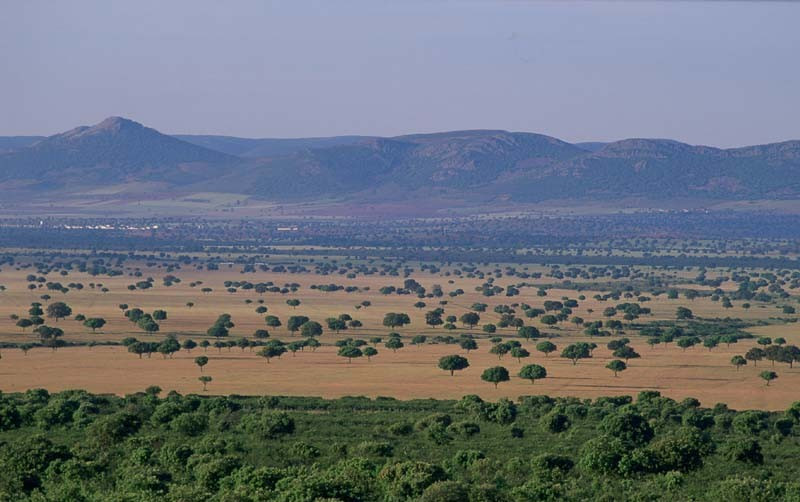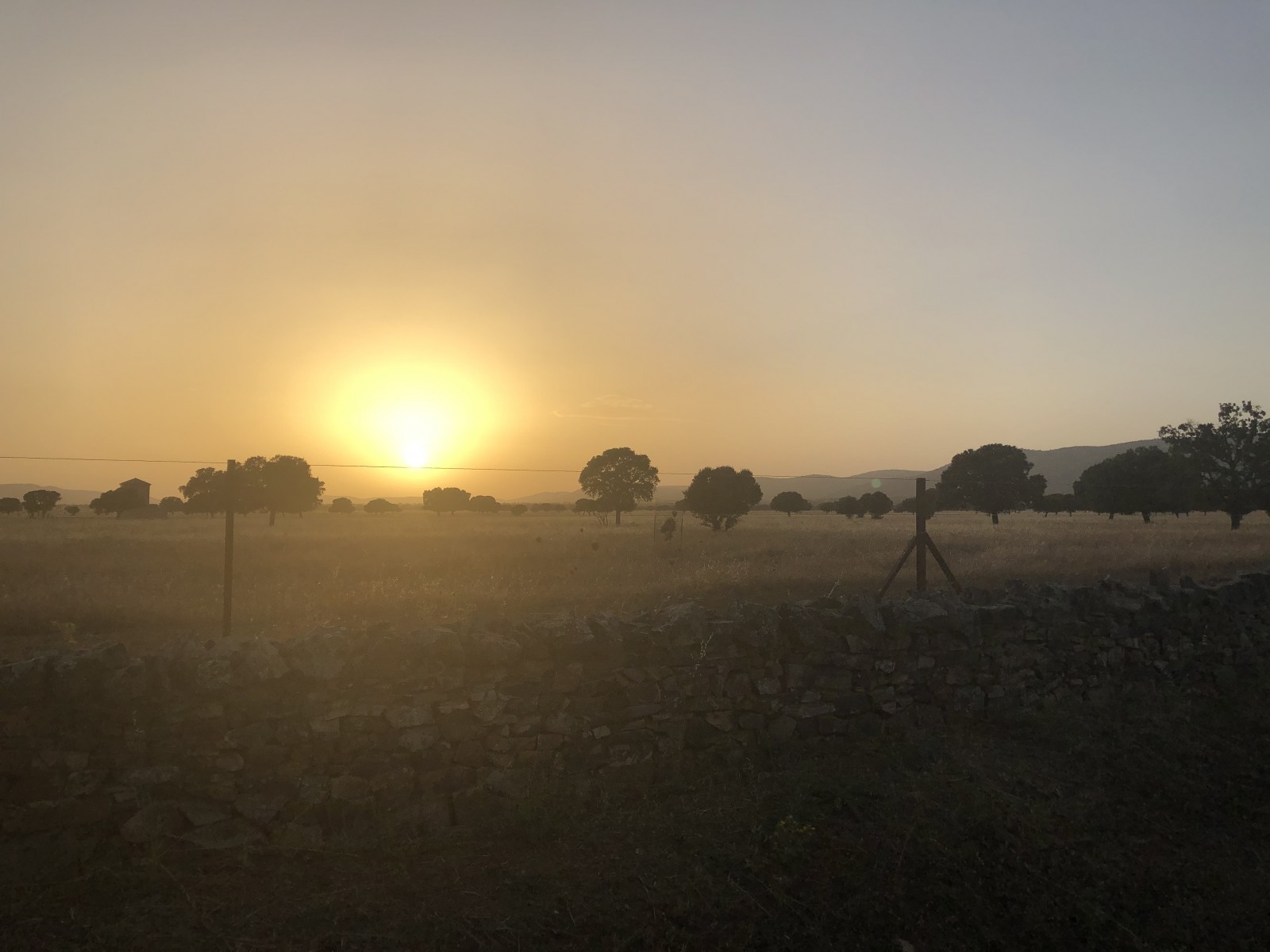Description
The huge Cabañeros national park lies in the heart of Spain. The area is very sparsely populated and is one of the few areas in Western Europe that is truly wild. With the wildlife to match it! The park hosts the world's second largest colony of Чёрный гриф (~300 pairs), a few pairs of of Испанский могильник, Дрофа and many more endangered species! It is one of the few places in the world where nearly all the typical species of the Mediterranean ecosystem still occur. Amongst the mammals, the red deer is very numerous (especially on the Raña). All in all, plenty of reason to visit!
This route consists of 2 main areas: the scrubby and wooded heart of the National Park and the Raña savannah just outside the parks borders. On the route through the heart of the park, you can expect to see the typical species of the Spanish heartland "Monte". Чёрный гриф breeds, so does Испанский могильник, Змееяд, Красная куропатка, Удод, Певчая славка, Иволга and many more species. This area does not have viewpoints, but it is very possible to pull up along the road and scan the area. Check the skies especially carefully for raptors (all characteristic species may be seen).
The second part takes you over the Raña, starting from Santa Quiteria in the direction of Casa Palillos (the second visitor centre). Again you can stop along the road to scan the steppes, but there is also an observatory (Observatorio de Cigüeñas) from which you can see Белый аист, red deer and steppe birds. At the visitor's centre there is also an observation platform and -tower. The main species here are: Дрофа, Стрепет, Авдотка, Белый аист, Иберийская сорока as well as several raptors; Белоголовый сип come down from the mountains to feed, sometimes joined by Чёрный гриф or Стервятник. Испанский могильник, Беркут, Змееяд, Орёл-карлик and several harriers may be seen as well. In winter and autumn, Серый журавль is very numerous and may be seen feeding on the acorns underneath the holm oaks.
Details
Access
The first half of the route is about 30 km long and starts in Retuerta del Bullaque and ends at the Visitor's centre in Horcajo de Los Montes. Follow the road south, straight through the heart of the National Park. Stop anywhere you like and can to look for birds of prey.
The second part is about 8 km long and takes you over the Raña, starting from Santa Quiteria in the direction of Casa Palillos (the second visitor centre). Again you can stop along the road to scan the steppes, but there is also an observatory (Observatorio de Cigüeñas) from which you can see white storks, red deer and steppe birds. At the visitor's centre there is also an observation platform and -tower where you can again look for steppe birds, big game and raptors.
Terrain and Habitat
Forest , Plain , Mountain , Steppe , Agriculture , Grassland , Scattered trees and bushesConditions
Mountainous , No shadow , Hilly , Dry , Open landscape , DustyCircular trail
NoIs a telescope useful?
Can be usefulGood birding season
All year roundBest time to visit
Winter , Autumn , SpringRoute
Paved roadDifficulty walking trail
EasyAccessible by
Car , BicycleBirdwatching hide / platform
YesExtra info
Note that this is an area of extremes: summers are very hot and winters very cold. Dress accordingly!



